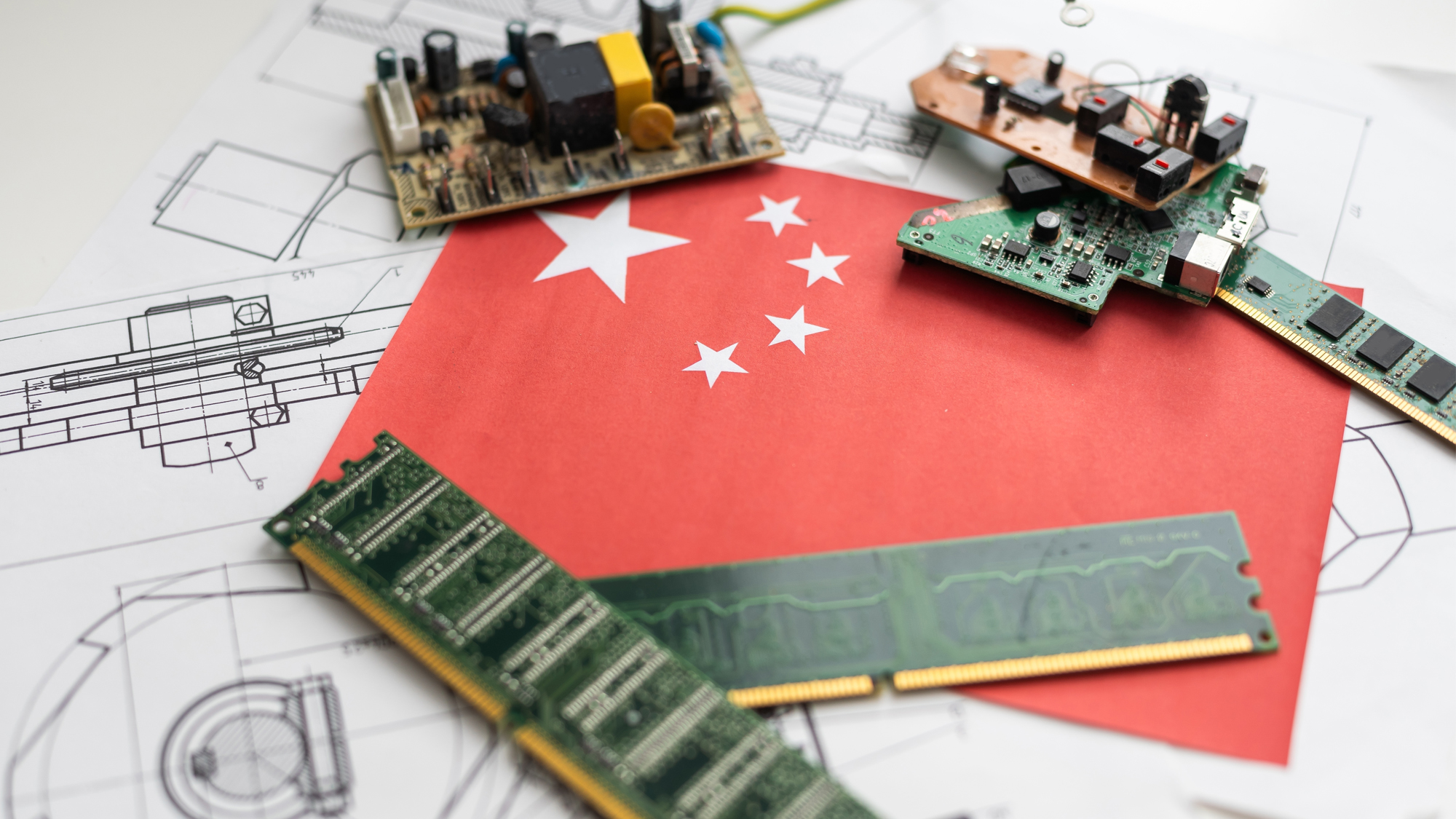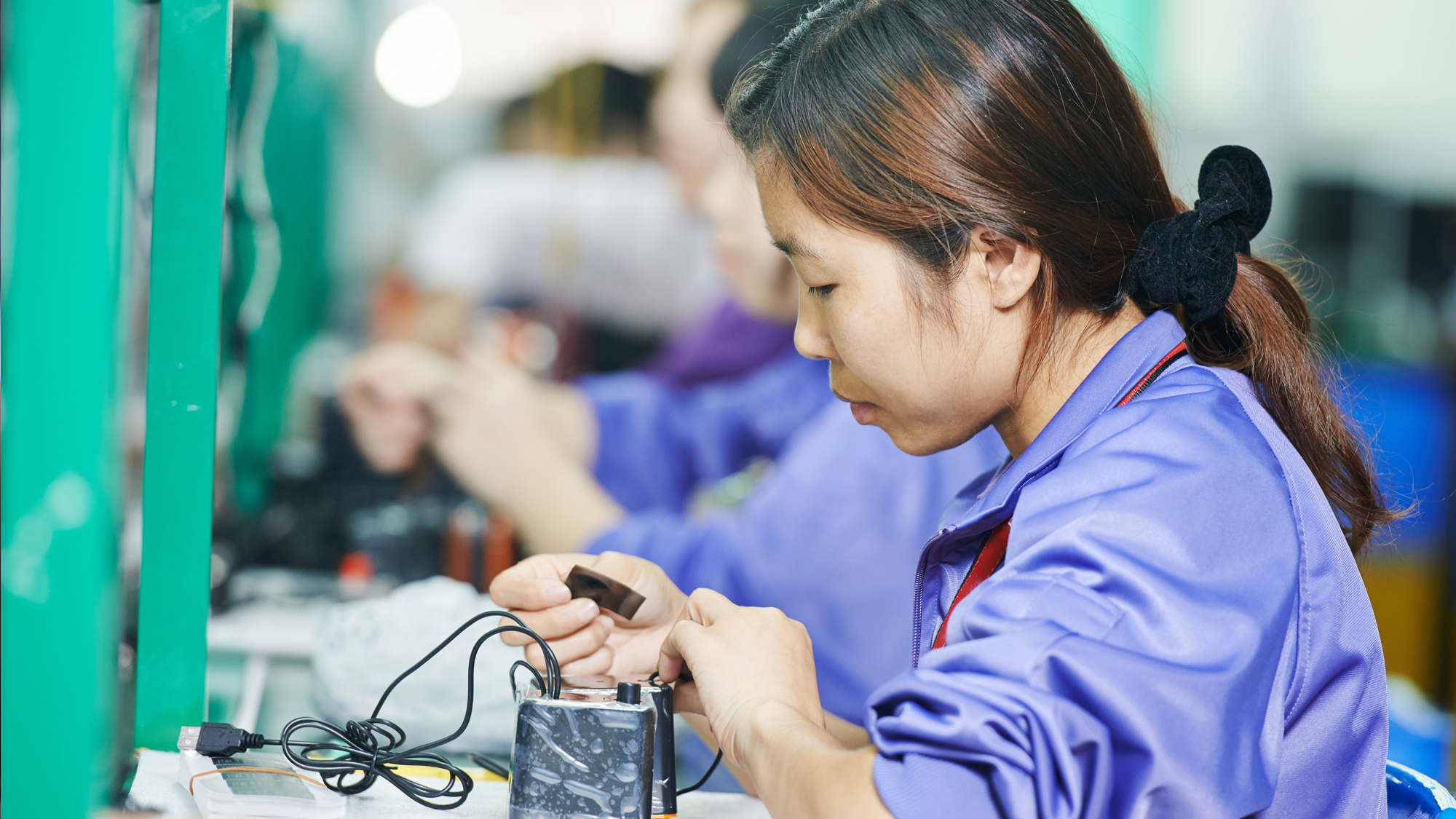Diversification vs. Dependence: Finding the Balance
China’s electronic components sector has produced several world-class companies. Below is a curated list of 10 leading or emerging Chinese component manufacturers (in no particular order) that are making waves globally. These companies offer professional-grade products and are positioning themselves as strategic sourcing alternatives for international buyers.
1. SMIC (中芯国际) – Semiconductor Foundry Leader
What they do: SMIC is China’s largest contract chip manufacturer (foundry), making integrated circuits for numerous clients.
Why on the list: SMIC achieved a 7nm process breakthrough, manufacturing advanced smartphone processors for Huawei. This put them on the map as a contender in sub-10nm fabrication. They mainly produce microcontrollers, RF chips, image sensors, etc., at nodes from 14nm to 28nm (and some 7nm). For buyers looking to have chips fabricated in China or to source “China-made” chips, SMIC is the go-to foundry. They have fabs in Shanghai, Beijing, and Shenzhen, and are expanding capacity with state support. Notable: SMIC’s ability to deliver 7nm chips without EUV tools demonstrated impressive process innovation.
2. YMTC (长江存储) – Advanced Memory Manufacturer
What they do: Yangtze Memory Technologies Co. produces NAND flash memory chips (for SSDs, storage devices).
Why on the list: YMTC developed a 232-layer 3D NAND flash that rivals Samsung and Micron’s best. In TechInsights teardowns, YMTC’s chips showed the highest density in commercial SSDs at the time. They are a symbol of China’s progress in memory semiconductors. YMTC’s Xtacking architecture allows them to innovate rapidly in stacking memory layers. Buyers may see YMTC’s 3D NAND appearing in SSDs (branded as Zhitai or through partners like Lenovo and Huawei). If you need flash storage or memory components, YMTC is a Chinese supplier to watch for competitive high-capacity chips.
3. Will Semiconductor (韦尔股份) – Image Sensor and IC Giant
What they do: Will Semi is a major fabless semiconductor company, known for CMOS image sensors (through its OmniVision brand) and various analog and mixed-signal chips.
Why on the list: Will Semi is now one of the top three image sensor suppliers globally (alongside Sony and Samsung) thanks to OmniVision. Their sensors go into smartphones, surveillance cameras, automobiles, and more. The company has seen strong growth – listed in Shanghai, it has become a large-cap tech stock, reflecting its success. Beyond image sensors, Will Semi also designs power management ICs and touch display drivers. For procurement, Will Semi/OmniVision offers a Chinese source for high-performance camera sensors, some of which are drop-in alternatives to better-known Japanese sensors. They also benefit from China’s push for self-sufficiency in phone components, meaning continued innovation and investment.
4. Goodix Technology (汇顶科技) – Human-Interface IC Innovator
What they do: Goodix designs chips for fingerprint sensors, touch controllers, Bluetooth audio, and other human-interface technologies.
Why on the list: Goodix was the first Chinese company to supply key components to Apple (they provided capacitive touch controllers for iPhones in the past) and is a long-time supplier of fingerprint sensors to Huawei, Xiaomi, etc. They have a strong IP portfolio in biometrics. Despite increased competition, Goodix remains a leader in capacitive and optical fingerprint sensor chips, and they’re expanding into hearables (Bluetooth System-on-Chip) and wearables. Buyers making smartphones or IoT devices should know Goodix as a potential source for fingerprint modules or touch/control ICs, as they often undercut other suppliers while delivering proven quality. In 2024, Goodix saw a notable rebound with new product launches, driving profit growth.
5. Shennan Circuits Co. (深南电路) – PCB and Substrate Powerhouse
What they do: Shennan Circuits is one of China’s largest PCB manufacturers, producing printed circuit boards, PCB assemblies, and IC substrates.
Why on the list: SCC has a strong reputation for high-layer-count PCBs and high-frequency boards, supplying telecom (5G base stations), data centers, aerospace, and more. They are also a major producer of package substrates – a critical component for chip packaging that historically came from Japan/Taiwan. With China’s emphasis on domestic PCB capability, Shennan has grown rapidly. They are part of the reason China holds 51% of global PCB production. For procurement teams, Shennan offers a reliable option for complex PCB jobs that require both scale and technical competence. They’re IPC certified, used to international clients, and have R&D centers to support early engineering.
6. Fenghua Advanced Technology (风华高科) – Passive Component Leader
What they do: Fenghua, based in Guangdong, is a top producer of passive components, notably MLCC capacitors, resistors, and inductors.
Why on the list: Often called the “Murata of China,” Fenghua has a huge share of the domestic capacitor market and exports worldwide. In 2024, it was one of the companies with positive revenue growth due to electronics and EV demand. They manufacture multi-layer ceramic capacitors in large volumes, including automotive-grade parts. They also produce thick-film chip resistors and have an in-house materials division (for dielectric powders), which gives them a vertical integration edge. Buyers looking for lower-cost yet dependable sources for passive components should get to know Fenghua. They have been improving product quality and range – now offering MLCCs in various sizes and voltage ratings, some suitable for telecom and automotive use. Fenghua’s stock is publicly traded, indicating transparency and investment in its capabilities.
7. Three-Circle Group (三环集团) – Ceramic & Passive Innovator
What they do: Three-Circle (Sanhuan Group) specializes in electronic ceramics – making components like MLCCs, ceramic substrates, ceramic filters, and casings.
Why on the list: This company has leveraged its ceramic materials expertise to become a major name in both passives and electronic materials. Three-Circle saw 30.36% YoY revenue growth in H1 2024, reflecting its strong market position. They supply MLCCs (often slightly larger case sizes or specialty ones), piezoelectric ceramics, and even make parts like ceramic smartphone backplanes and fingerprint sensor covers. For procurement, Three-Circle is a source of high-quality components that benefit from China’s vast ceramics industry (the town of Chaozhou, their base, is historically a ceramics hub). They are often the supplier behind the scenes for many assemblers. If your product uses RF ceramic filters or lots of capacitors, Three-Circle could be a strategic alternative supplier to diversify from Japanese sources.
8. StarPower Semiconductor (斯达半导) – Power Electronics Champion
What they do: StarPower manufactures power semiconductor devices, notably IGBT modules, MOSFETs, and increasingly SiC (silicon carbide) power components for electric vehicles and industry.
Why on the list: Based in Jiaxing, StarPower has become the leading domestic Chinese vendor of IGBT modules – the switches at the heart of EV inverters and industrial motor drives. As China electrifies its auto fleet and industrial equipment, StarPower’s business has boomed. They went public on Shanghai’s STAR Market and are often referred to as a national champion in power semiconductors. They collaborate with multiple EV OEMs to tailor power modules. For international buyers in automotive or renewable energy sectors, StarPower offers a possible second source or even primary source for IGBTs and SiC MOSFETs. Their technology has rapidly improved, and they are now on par with some Japanese and European offerings in mid-range applications, thanks to R&D and access to domestic SiC wafer supply. StarPower exemplifies how China is closing the gap in high-power, high-reliability components historically dominated by Infineon, Mitsubishi, etc.
9. Luxshare Precision (立讯精密) – Connectors & Assembly Titan
What they do: Luxshare makes electronic connectors, cables, and also provides EMS (electronics manufacturing services) for devices and wearables.
Why on the list: A name well-known in Apple’s supply chain, Luxshare started with connectors and has grown to a multi-billion-dollar firm that competes with the likes of Foxconn. They produce everything from AirPods (as an OEM assembler) to high-speed connectors for servers. For components specifically, Luxshare’s connector division supplies USB-C connectors, board-to-board connectors, RF coaxial connectors, etc., to many companies globally. They have design capabilities to create custom interconnect solutions. Procurement teams should note Luxshare as an option when sourcing connectors and cable assemblies – they’ve got manufacturing in China and Vietnam and offer very competitive pricing for high-volume needs. Their quality is proven by the fact that they are entrusted with flagship products (smartphone connectors, laptop connectors) by top brands. As connectors are often standard yet critical parts, having Luxshare on your supplier list can be valuable.
10. UNISOC (紫光展锐) – Fabless Mobile Chip Provider
What they do: UNISOC is a fabless semiconductor company focusing on mobile chipsets (application processors and baseband modems) for smartphones, tablets, and IoT devices.
Why on the list: UNISOC is the world’s fourth-largest mobile SoC designer, with around 10-15% global market share in smartphone processors. It supplies 4G/5G chips primarily for entry-level and mid-range devices, and has a strong presence in markets like Africa, India, and China’s domestic market (e.g., many affordable Android phones and smart feature phones run on UNISOC chips). They also make IoT modems for connected devices. For buyers, if you’re developing a cost-sensitive mobile device or IoT product, UNISOC’s solutions can be a cost-effective alternative to Qualcomm or MediaTek. They often integrate connectivity (Wi-Fi, Bluetooth, GPS) and offer turnkey reference designs. As of 2025, UNISOC is also investing in 5G and AI-capable chips (with some technology inherited from the defunct Spreadtrum and partnerships with Huawei). Given geopolitical currents, UNISOC might also remain one of the few bridges for Chinese 5G technology to reach global markets in an accessible form. Keep an eye on them if your products need wireless communications.

